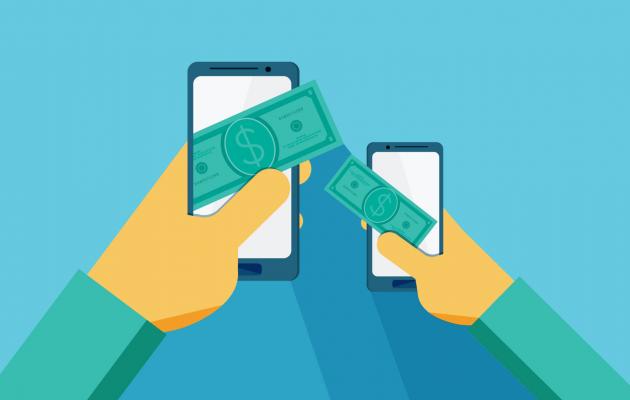Mobile Payments Are Really Moving

There are two types of smartphone users. There are those that regularly make a mobile payment at the point of sale using their smartphone as a digital wallet. And then there are the rest, who, as it turns out, are rapidly adopting the person-to-person (P2P) mobile payment convenience.
The US Mobile Payment Users report from eMarketer shows that the proportion of mobile payment users will grow from 27% in 2018 to about 34% in 2023. Experts expect that 69 million Americans will make person-to-person payments in 2021.
If you are new to using your smartphone as a mobile payment device but are mobile payment ‘curious’, here is a quick way to get up to speed.
A mobile payment is made with a portable electronic device
There you have it. A cell phone or tablet replaces the wallet and checkbook. Mobile payment applications such as Apple Pay, Android Pay, Samsung Pay, Google’s Hands Free, or PayPal operate on these devices and are how you transfer funds to make a payment.
Mobile payments are more secure than cash
Drop your wallet while out and about and if you one of the few lucky ones to get it back, you will almost certainly be relieved of any cash or credit cards. But misplace your cellphone or tablet, and you at least have the benefit of that device requiring a personal identification number (PIN) or fingerprint scan or facial scan to operate. That makes it all the harder for someone to take your money if they found your device.
Adding to the security of mobile payments is two-factor authentication. This is a technical description of a simple communication to you that is confirming that you indeed want to make that purchase.
Three types of mobile payments
The three types of mobile payments are:
- made using an internet browser and a vendor’s online shopping cart, with payments transferred from a credit card or debit card account
- vendor-specific mobile apps that require a PIN, fingerprint or facial scan to authorize
- the mobile wallet concept that uses either Bluetooth or Near Field Communication (NFC) from your electronic device to provide a “hands-free” method of payment at the point-of-purchase.
I have to admit I love using our credit union’s mobile app and particularly the Zelle feature that makes transferring money to friends or family incredibly easy and secure. I don’t want to go all "sales-pitchy " on you, but click here to check it out. I will go out on a limb to say you will want it.
Digital currency could be a game changer
I am writing this during the unprecedented COVID-19 lockdown. But consider the normal world where international travel is commonplace. You used to have to acquire the currency of the country you were entering to be able to make local payments. Digital currencies, also called “crypto-currency systems like Blockchain, eliminate that need.
Blockchain is nothing more than an electronic ledger that communicates every individual user’s transactions. The “block” is the ledger, and the “chain” is the interconnected transmission to person-to-person companies, like your credit union to a retail vendor. Participants in Blockchain are international, with everyone having access to the same database of transactions.
This technology is made secure by the use of cryptography, the process by which the buyer and seller both have the same two codes, called a Public Key and a Private Key. These keys confirm your identity and the identity of the company or individual you are doing business with.
With this technology, you can conduct purchase transactions with businesses and transfer money to other people with equal ease and immediacy.
Mobile payments are here to stay. And that’s a good thing.


Join the discussion